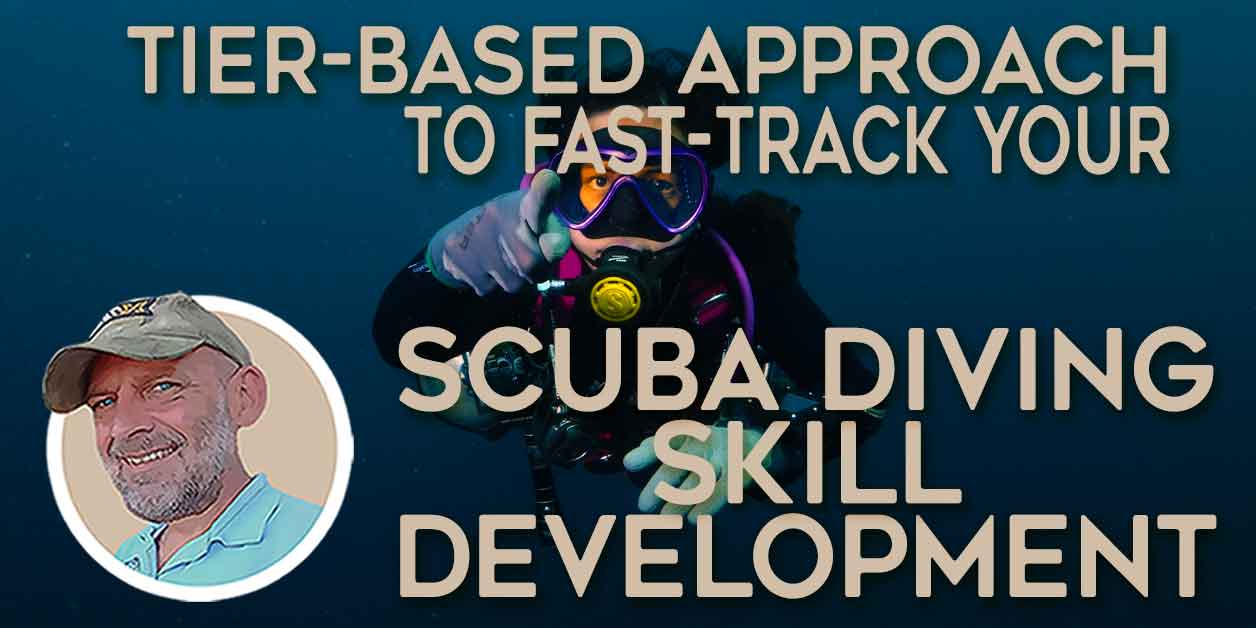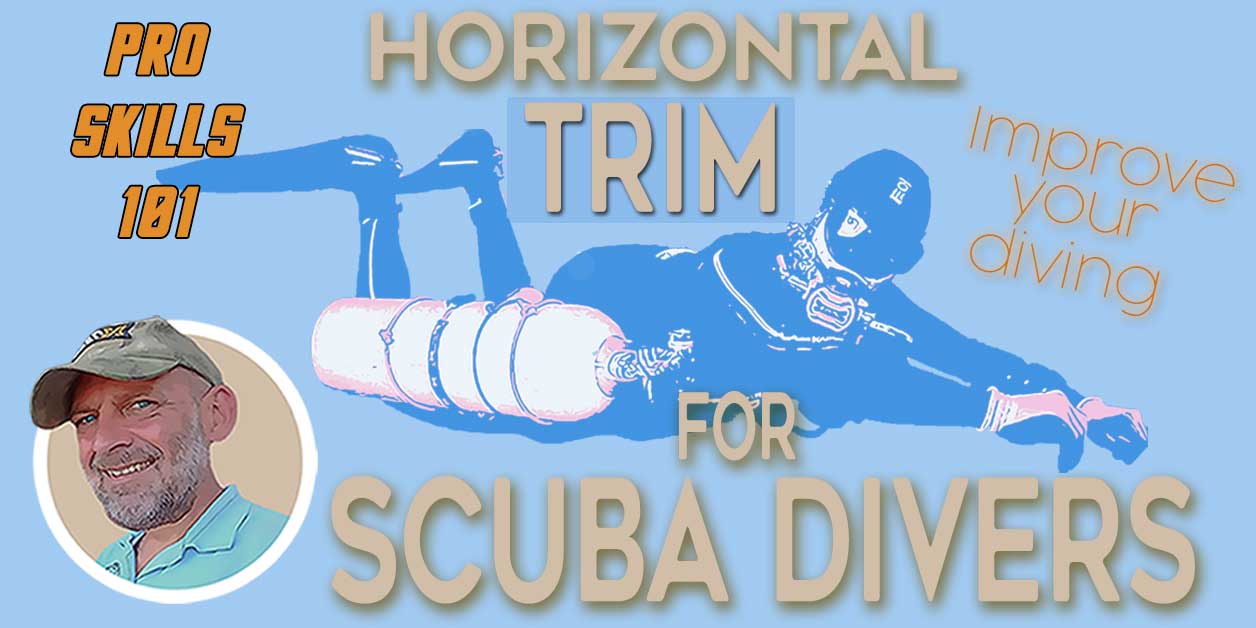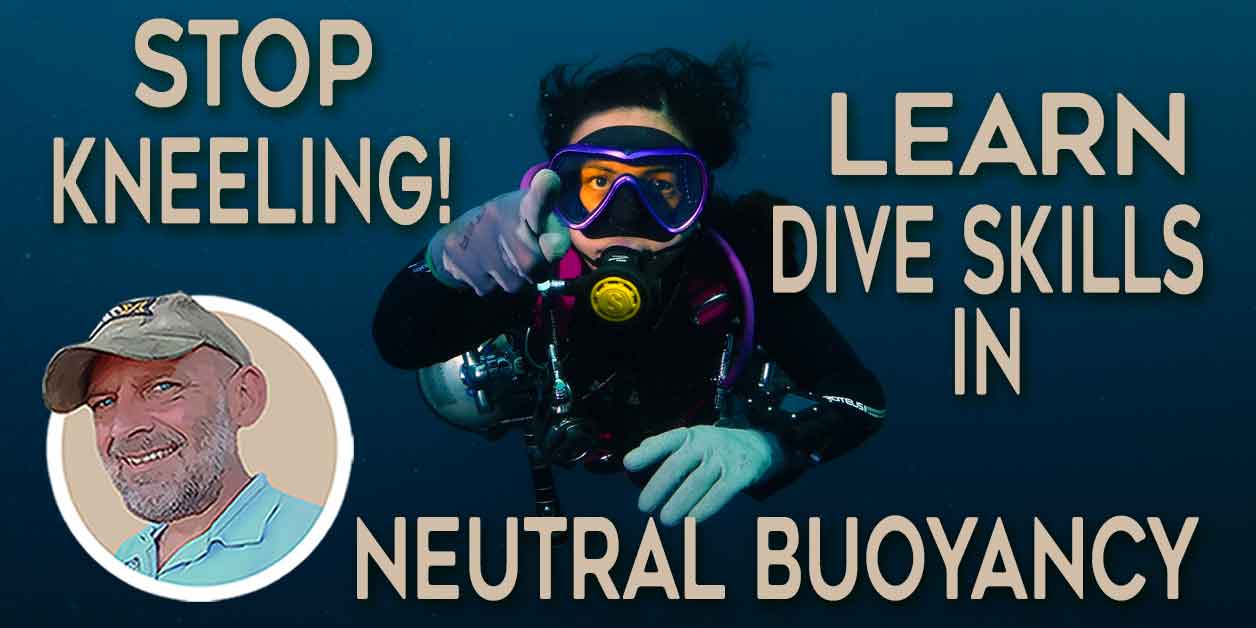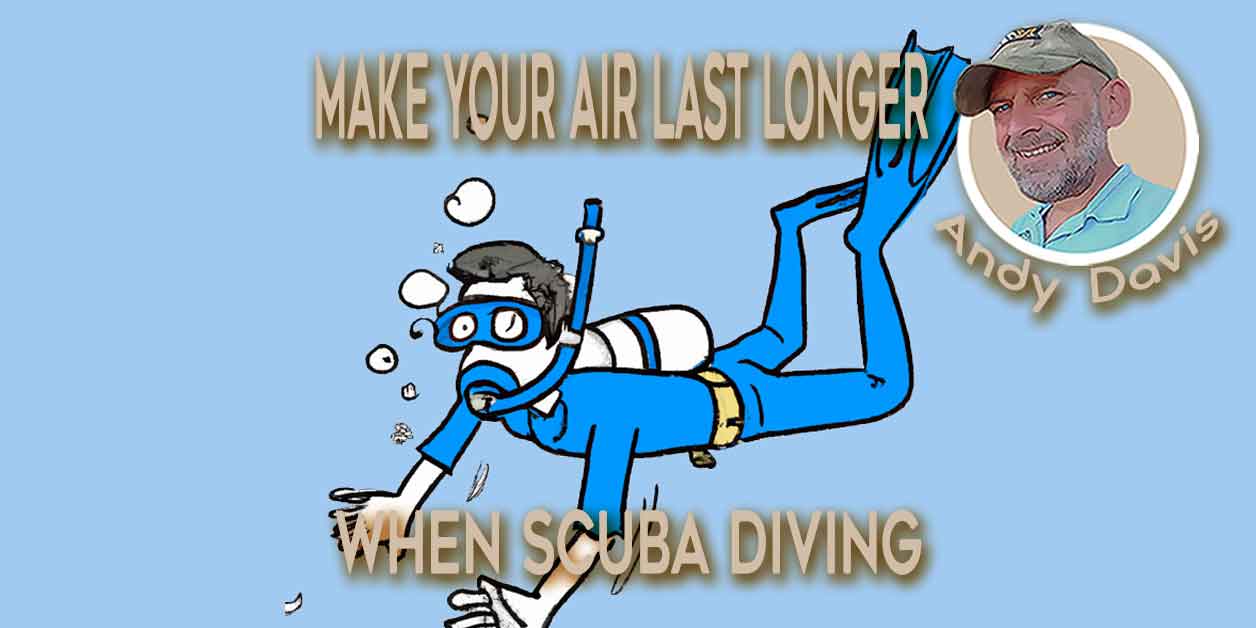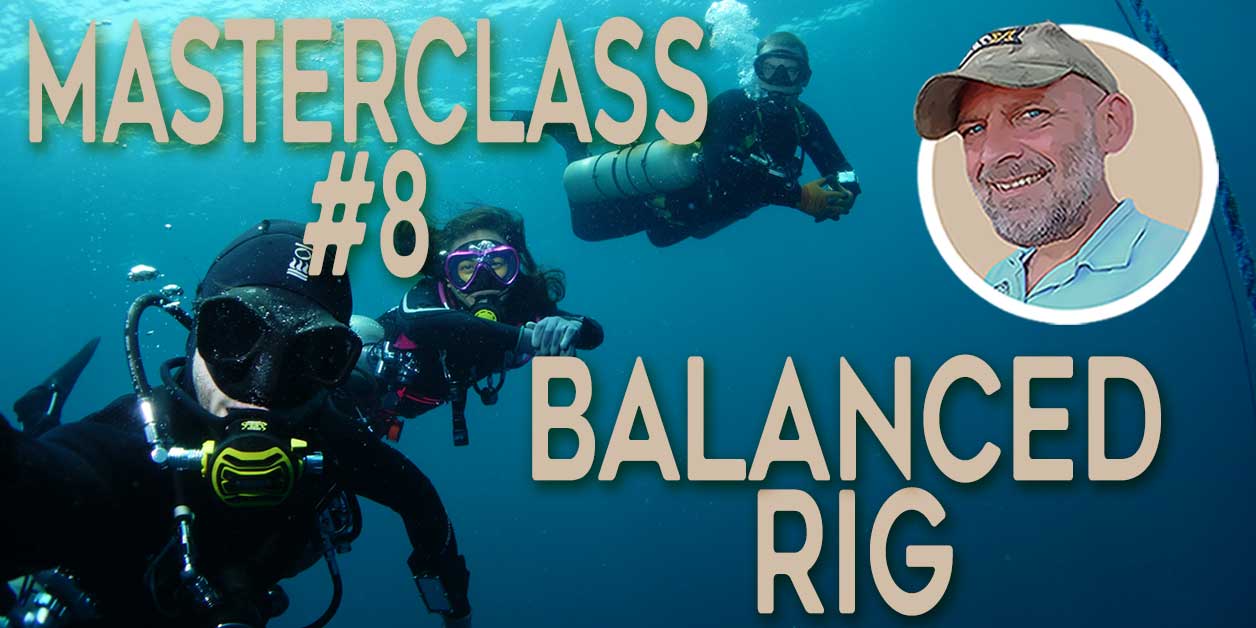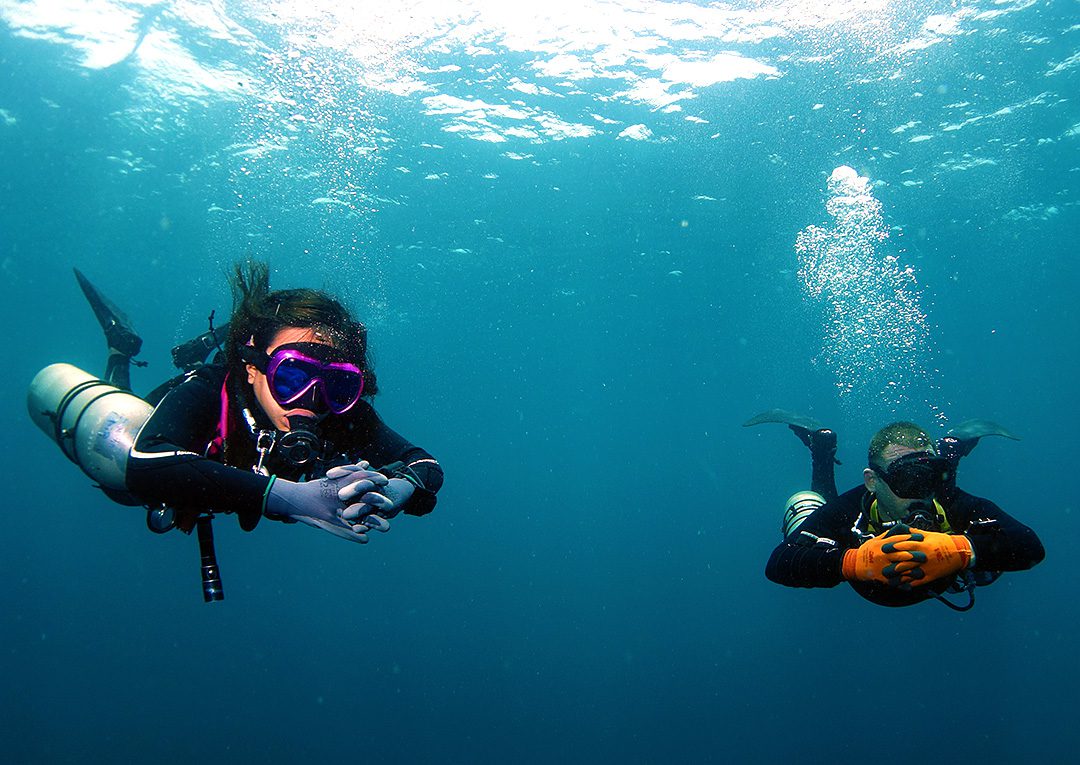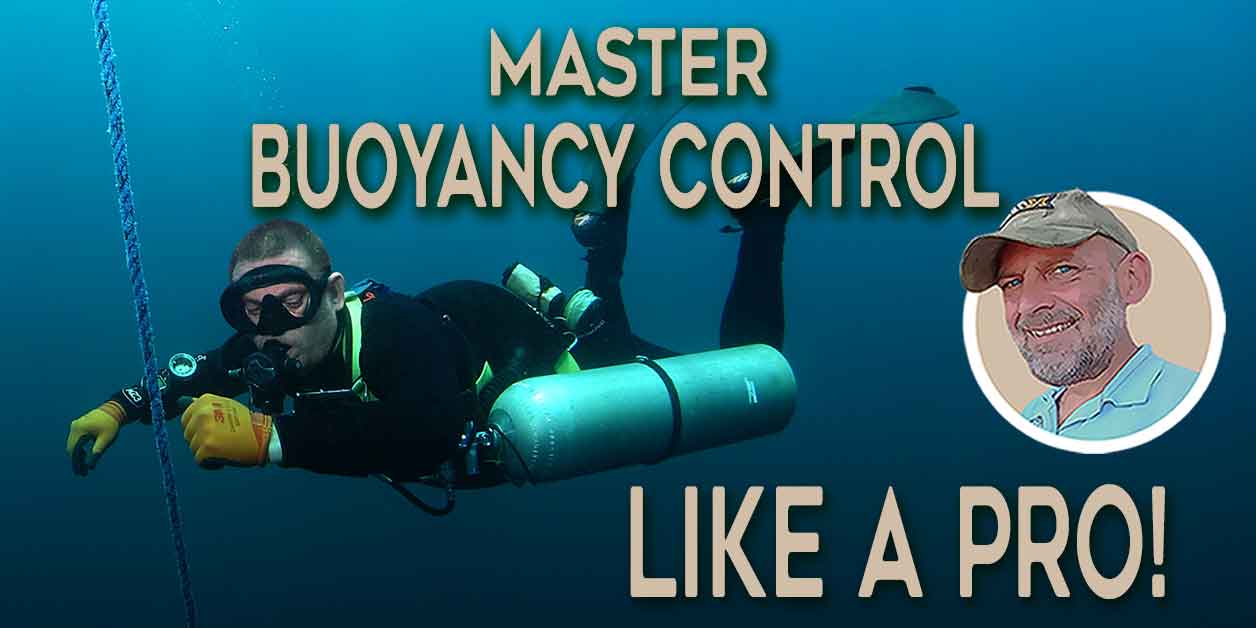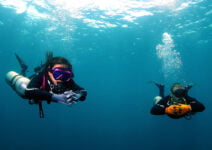Using Your Hands Whilst Scuba Diving
Are you a novice scuba diver looking to improve your air consumption and increase your relaxation and fluidity underwater? If so, you might want to consider breaking the instinctive habit of using your hands wheb diving.
While it may seem natural to use your hands to swim underwater, it is inefficient for control and propulsion. As a result, you will feel less stable and your air consumption will be higher.
In this article, I will explore:
- The reasons why it’s best to limit the use of your hands while scuba diving
- Tips on how to develop appropriate fin techniques to control and propel yourself underwater.
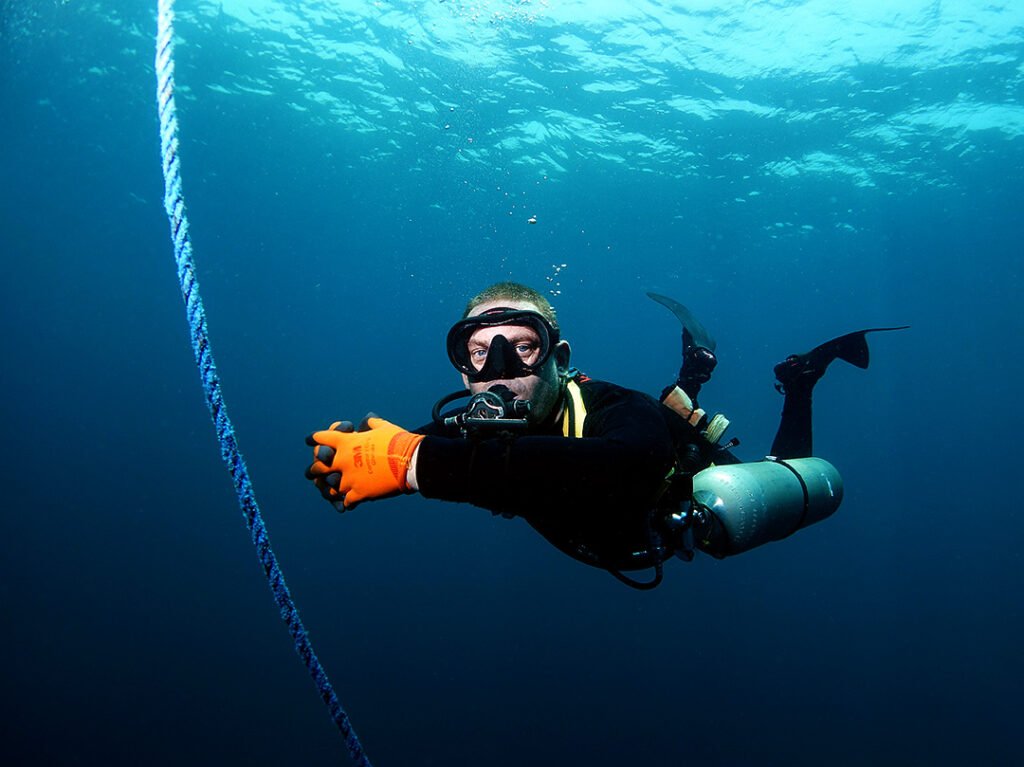
It is instinctive to use the hands when scuba diving
Many novice divers wish to improve their air consumption during dives and increase their relaxation and fluidity underwater. A major obstacle to these goals is using your hands for control and/or propulsion
I think that most novice divers have an instinctive tendency to try and ‘swim’ underwater. Who can blame them? They spend years swimming with both their hands and feet, but have to re-learn an appropriate propulsion technique when they transition to scuba diving using fins.
Added to that are the natural tendencies for novice divers to feel ‘unstable’ in the water. Use of the hands often represents an attempt to ‘balance’ in the water column. Obviously, there is no actual ‘need’ to balance underwater.. However, as experience develops (plus better trim of their equipment), the diver graduates out of this tendency. It comes with relaxation.
Reasons not to use the hands when scuba diving
There are a number of reasons why over-use of the hands for propulsion and control can be negative for a diver.
The primary one is that it is an inefficient physiological method, that ultimately requires more O2 metabolization in the body and, hence, more air consumption. It also decreases streamlining and increases water turbulence, slowing the diver.
In addition, the use of hands can lead to silting/bottom disturbance. When diving inside wrecks or caves, this can present an actual danger to the diver.
In other situations, it will simply lead to a deterioration of the quality of the dive, as visibility is lowered. For underwater photographers, it can lead to filling photos with backscatter/particles and also scare away the target of their photo.
- Overusing hands for propulsion and control can have negative effects on the diver.
- It is an inefficient physiological method that requires more O2 metabolization and increases air consumption.
- It decreases streamlining and increases water turbulence, slowing the diver.
- Use of hands can lead to silting/bottom disturbance, which can be dangerous when diving in wrecks or caves.
- It can also lead to lowered visibility and negatively affect the quality of the dive.
- For underwater photographers, it can lead to backscatter/particles in photos and scare away the target.
Some diving activites keep the hands busy
There are also many activities underwater that require the use of the hands for other purposes. Cave/Wreck divers will be using torches and lines. The hands won’t be available for sculling.
Photographers and videographers will also have their hands full. So will divers who conduct search and recovery activities, where they have to control a lift bag. The list goes on.
It is absolutely fair to view the limitation of the use of hands for propulsion/control as a ‘best practice’ mentality in scuba diving.
Good dive instructors break this habit
A responsible instructor will communicate the reasons for this to their students and help them, through drills and practice, to develop appropriate scuba techniques that do not utilise the hands.
A diver can fully control and propel themselves underwater using fin techniques such as; the helicopter turn and back-kicking.
These techniques are typically the preserve of advanced technical, wreck and cave divers, but there is no reason why novice recreational divers should not aim to add them to their capabilities.
The simple fact is: you don’t need to use your hands for control or propulsion underwater. There are drawbacks to doing so…and techniques that exist which allow better function using the fins alone.
Eliminating a reliance on your hands for sculling requires some dedication to perfecting proper techniques.
Key points about using your hands when scuba diving
It is instinctive for novice divers to use their hands for control and propulsion, but this can be counterproductive.
Overusing the hands can lead to:
- increased air consumption
- decreased streamlining
- disturbance of the water environment
Divers can fully control and propel themselves underwater using fin techniques such as the helicopter turn and back-kicking.
Good dive instructors can help students develop appropriate scuba techniques that do not rely on the hands.
By eliminating a reliance on hands for sculling, divers can improve their air consumption, relaxation, and fluidity underwater.
Here are the key points to remember when it comes to using your hands when scuba diving:
- Using your hands for control and propulsion can be counterproductive.
- Overusing the hands can lead to increased air consumption and disturbance of the water environment.
- Divers can fully control and propel themselves underwater using fin techniques.
- Good dive instructors can help students develop appropriate scuba techniques that do not rely on the hands.
- Eliminating a reliance on hands for sculling can improve air consumption, relaxation, and fluidity underwater.
About The Author

Andy Davis is a RAID, PADI TecRec, ANDI, BSAC, and SSI-qualified independent technical diving instructor who specializes in teaching sidemount, trimix, and advanced wreck diving courses.
Currently residing in Subic Bay, Philippines; he has amassed more than 10,000 open-circuit and CCR dives over three decades of challenging diving across the globe.
Andy has published numerous diving magazine articles and designed advanced certification courses for several dive training agencies, He regularly tests and reviews new dive gear for scuba equipment manufacturers. Andy is currently writing a series of advanced diving books and creating a range of tech diving clothing and accessories.
Prior to becoming a professional technical diving educator in 2006, Andy was a commissioned officer in the Royal Air Force and has served in Iraq, Afghanistan, Belize, and Cyprus.
In 2023, Andy was named in the “Who’s Who of Sidemount” list by GUE InDepth Magazine.
Purchase my exclusive diving ebooks!
Originally posted 2018-11-05 06:10:41.







